SOLO TRAVELLER IN SARAJEVO, BOSNIA AND HERZEGOVINA
SOLO TRAVELLER IN SARAJEVO, BOSNIA AND HERZEGOVINA
The Republic of Bosnia and Herzegovina (Bosna i Hercegovina), informally known as Bosnia, is located in the western Balkan Peninsula of Europe. It is a mountainous country, once part of the former Yugoslav Federation, and its capital is Sarajevo. Bosnia shares its borders with Croatia, Montenegro, Serbia, and the Adriatic Sea. Most significantly, it is one country with three ethnic groups; the Bosniaks (Muslims), Serbs (Serbian Orthodox), and the Croats (Roman Catholics). Its population is under 3.5 million people, and, similar to Montenegro, it is an ethnically diverse and multi-religious country. Bosnia is famous for its gorgeous mountains, rivers and waterfalls, medieval ruins, unique towns, and the former host of the 1984 Winter Olympics. It is an inexpensive, safe, and developed country. Please continue reading for a vicarious trip with the solo traveller in Sarajevo, Bosnia and Herzegovina.
Minimum 15% savings available on new accommodation bookings at participating properties indicated by the ‘Getaway Deal’ badge on the search results and room selection pages. Bookings must be made before 9:59 am CET on 30/09/24 for stays with check-in from 29/03/24 and check-out on or before 30/09/24. Discount applies to the cost of room only (excluding any additional fees or taxes). If you make any changes to your booking you may lose your discount and be liable for the full amount. Discount cannot be used in conjunction with any other promotion except Genius discounts. Room rates labelled “Partner Offer” are excluded from this promotion. This offer is provided by the participating property and subject to availability.
As an Amazon Associate I earn from qualifying purchases.
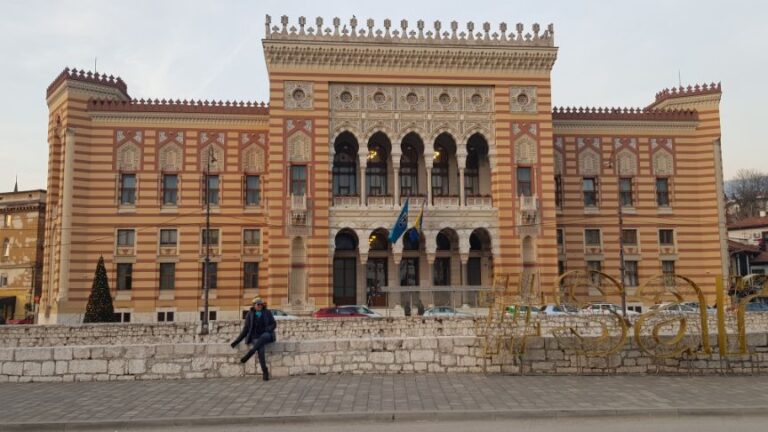
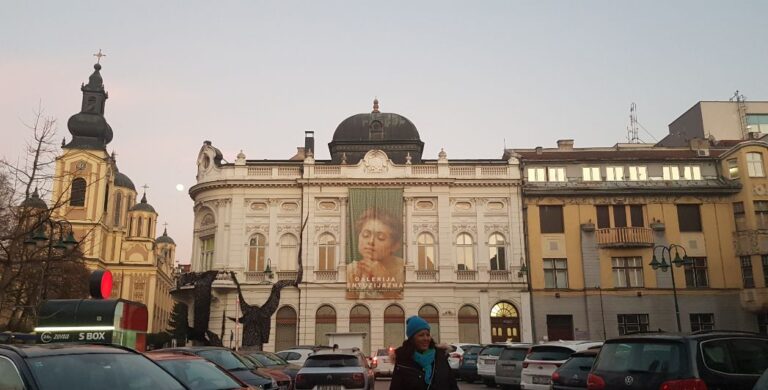
WHAT IS MOST PROMINENT ABOUT BOSNIA & HERZEGOVINA?
The mention of Bosnia and Herzegovina or Sarajevo, the first thing that comes to mind is the previous civil war in Sarajevo in 1992. Furthermore, many will recall it hosted the Winter Olympics 1984, and was the first to be held in a socialist country (second to the Moscow Summer Olympics in 1980).
However, eight years after the Olympics, Sarajevo was besieged for four years. This was the longest besiegement of any capital in the history of modern warfare. During this period, they turned many hotels built as part of the Olympic Village into prisons and even the medal podiums into execution sites.
Subsequently, over 100,000 citizens died. Additionally, it destroyed many of its keepsakes, including the ski jumps, bobsled tracks, hotels, and venues. Moreover, less than 20 years after the war ended, they refurbished some and abandoned many sites.
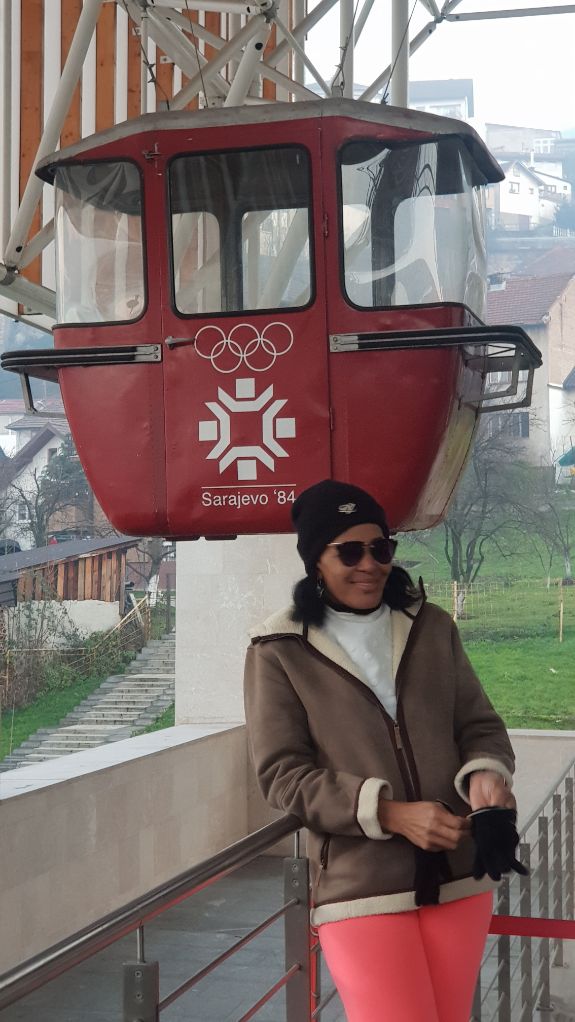
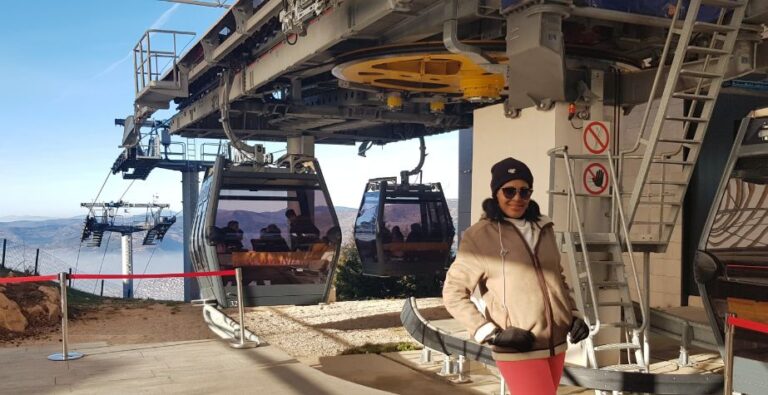
ENTRY INTO & EXIT FROM SARAJEVO, BOSNIA & HERZEGOVINA
I arrived and exited Bosnia by land using one of the regular buses from Podgorica, Montenegro. It was a full bus of visitors like myself, and it took under 8 hours to arrive in the capital. Most of the journey was picturesque. We passed villages, gorgeous mountains, tunnels, lakes, and rivers. However, the latter part of the journey had many winding, rocky, unpaved roads, especially nearing entry into Bosnia. Some people might think it is a long and tedious journey. Hell no! Especially when you are on vacation and embarking on a new adventure with ample time to spare. It is an unforgettable and thrilling escapade. I loved every minute of it and wish to do it all again..
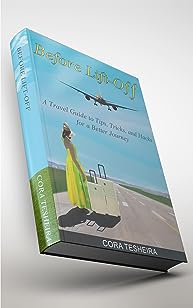
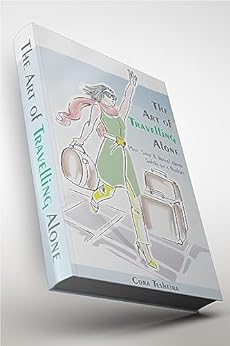
As I previously wrote for those desiring to traverse the same route, I will reiterate that the bus stops several times along the way. The first pit stop was at the Montenegro Border Police Post for your departure stamp. The other pit stops were for washroom and snack breaks, and the last pit stop was at the Bosnian border. As a side note, I sympathize with the Bosnian officers who work there. I found the area depressing, and likewise, the physical workstation.
On reaching the Bosnian border, all passengers had to go through the usual drill. We had to exit the bus, leave everything behind, and line up for processing. We then presented ourselves before the officers for passport and visa verification etc. It was a smooth interaction. They verified and stamped the passports. Then we were on our way to Sarajevo.
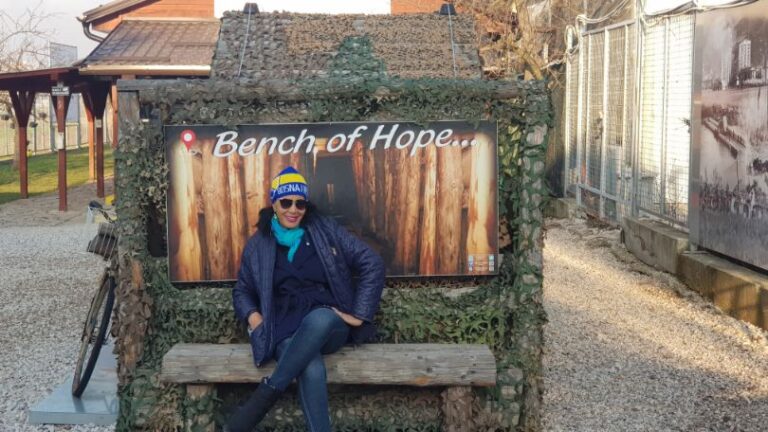
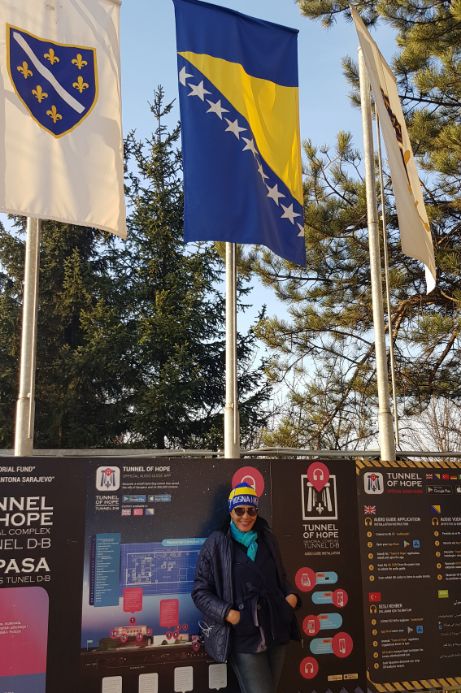
PURCHASE A BUS TICKET ARRIVING AND DEPARTING FROM SARAJEVO BUS TERMINAL NOT SRPSKA - Here is my arrival Story
This is a note to those purchasing bus tickets from Montenegro bus station or any other city to Sarajevo. Be specific about the bus station in Sarajevo, Bosnia, you will arrive and depart. There are two bus stations in Sarajevo; the Sarajevo bus terminal and Sarajevo (East) bus terminal, which is in the Republika Srpska. Avoid the hassle and extra costs from Srpska to Sarajevo City Center. Why do I suggest this? Here is why. The journey should have ended at the Sarajevo bus station in the city center, or so I thought. However, at the last stop, the bus driver announced, “Last stop, everybody off” at a bus station I thought was in Sarajevo bus terminal, but it was not.
Leaving the bus, I quickly found a restaurant for a quick bite and enquired about a taxi to the hotel. The proprietor asked for its location, which I provided, he then said it was far from there. However, I remembered the contact at the hotel saying it was a short distance from the bus station. I then sent him a message and explained that I had arrived, but from his description, the bus station did not seem like the one he mentioned in a previous email. He then asked for a photo of the bus station, which I sent, and his response gave me an instant headache. He said, “you are in another country”. I panicked a little upon hearing this.
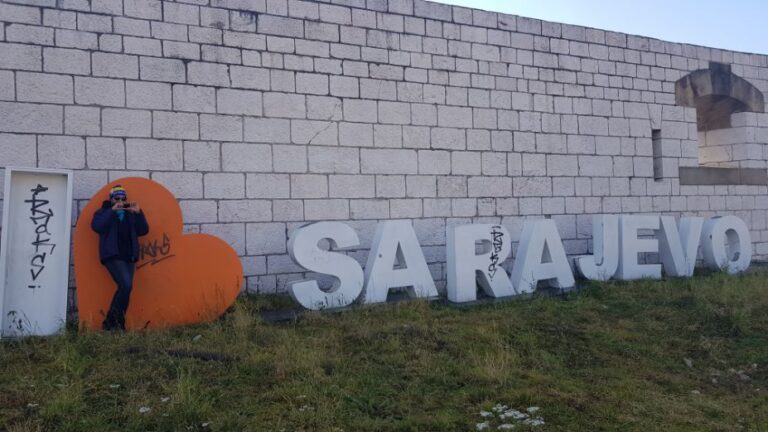
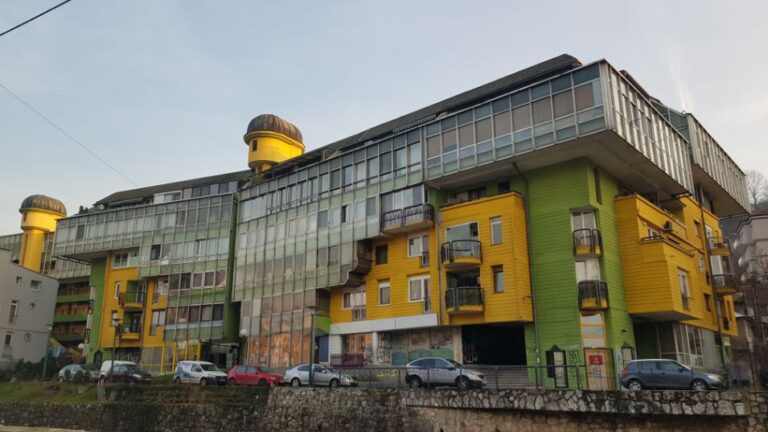
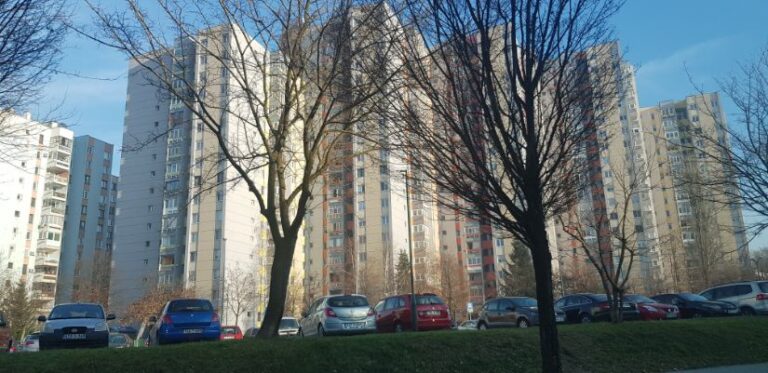
I then turned to the proprietor who told me I was not in a different country. He continued to explain that I was indeed in Bosnia but in Srpska, the Serbian side. However, because of the internal differences, some Bosnians (Bosniaks and Croats) on the other side view Srpska as a different country. I was grateful for the explanation. What a dramatizer the hotel contact was!!
He then contacted a taxi to take me to the hotel in downtown Sarajevo. It took less than 30 minutes, at an additional cost I unwillingly paid. This information comes from a solo traveller in Sarajevo, Bosnia and Herzegovina. I hope this information helps those who might (solo or otherwise) be unfamiliar with the procedures and bus stations.
Point to note: Taxi drivers from the Republika Srpska are sometimes unwilling to drive to the Federation and vice versa. So you will have to pay their asking price.
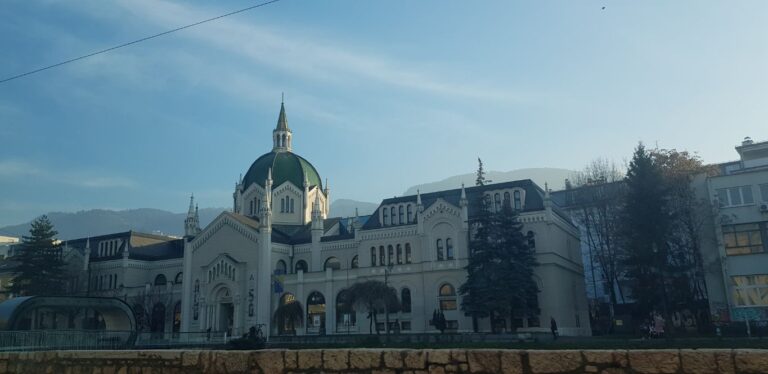
ABOUT THE CITY OF SARAJEVO
Sarajevo is the capital and largest city in Bosnia and Herzegovina. It is called the “Jerusalem of Europe”. Why? Because of its religious diversity. It is one of the few major European cities with a Catholic church, synagogue, Eastern Orthodox church, and mosque within the same neighbourhood. Sarajevo lies in the narrow valley of Miljacka River (which runs in the middle of the city), at the foot of Mount Trebevic. The capital is the main political, cultural, and financial center. In 2009, Lonely Planet ranked it as the 43rd best city in the world to visit (I concur).
There are 21 Cities of Film worldwide, spanning 18 countries and four continents. Sarajevo made this list and was not only inscribed in the City of Films in 2019 but designated as a UNESCO Creative City for having placed culture on the front burner of development. The city has yearly activities which keep it interesting, vibrant, and attractive to many visitors. Some of the most popular festivals include the Sarajevo Winter Festival, the Sarajevo Jazz Festival, and, of course, the Sarajevo Film Festival.
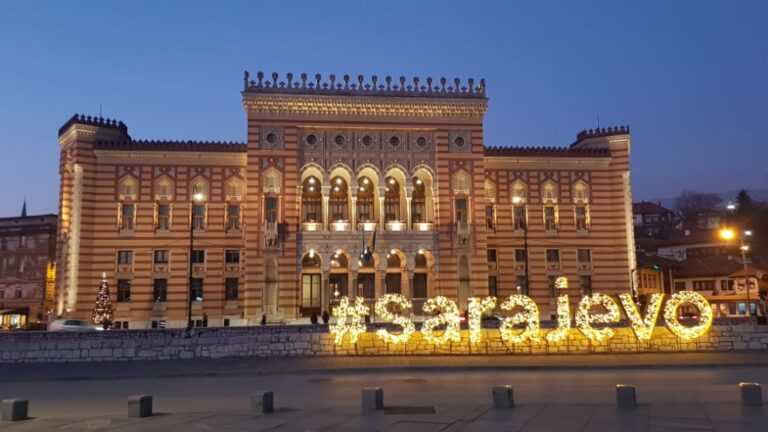
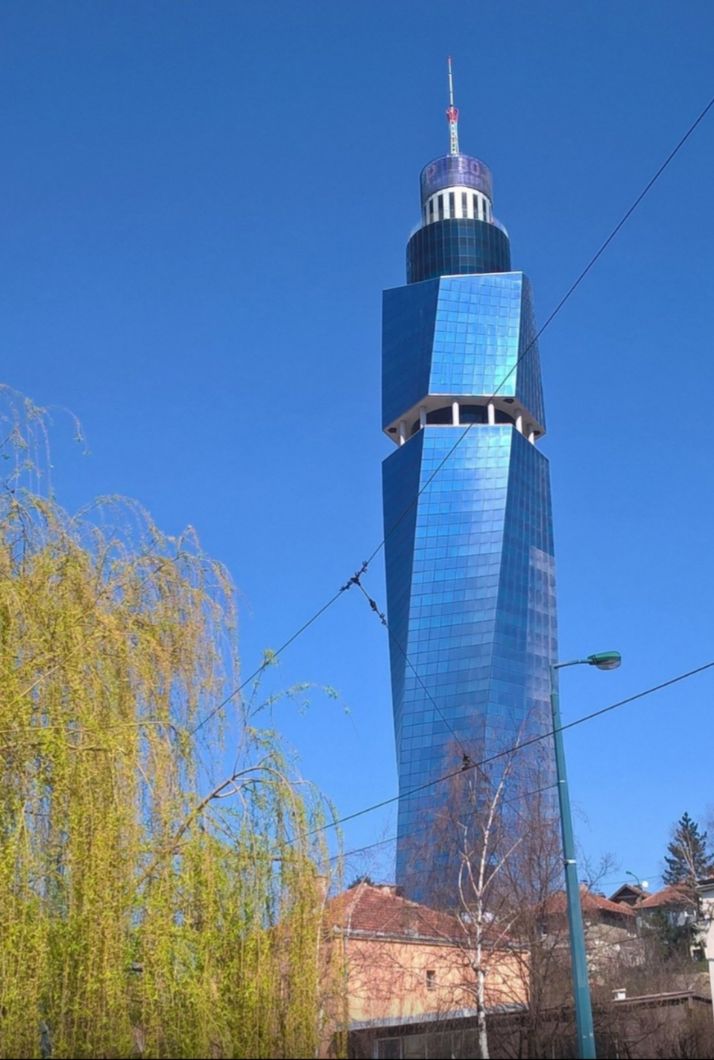
Sarajevo is a resilient, scarred-yet-beautiful city, surrounded by picturesque mountains. This offers a variety of outdoor activities, such as hiking, off-road biking, snowboarding, and skiing during the winter months. Something interesting awaits everyone to partake in year-round.
It continues to boast of its accolade for hosting the 1984 Winter Olympics, which was a great success and quite profitable for the country. Of course, it brought development and modernization to the city. From what I saw in the city, I could only imagine how beautiful it was before the civil war destroyed some of it.
It attracted a large tourist crowd during the winter because the sites of interest and streets were always full of visitors. Some shopped for souvenirs, and others did sightseeing or patronized the coffee shops. The city has many restaurants, bars, cafes, souvenir shops, stores, museums, outdoor bazaars, and marketplaces. Some of its streets are narrow with cobblestones, so wear some comfy shoes.
Bascarsija, erected in the 15th century, is the old part of the city and is a definite must-see. It is the prime market area with shops and trading, where various merchants sell almost everything. While there, you can also hang out and have Bosnian coffee, sip rakia, or enjoy the captivating city.
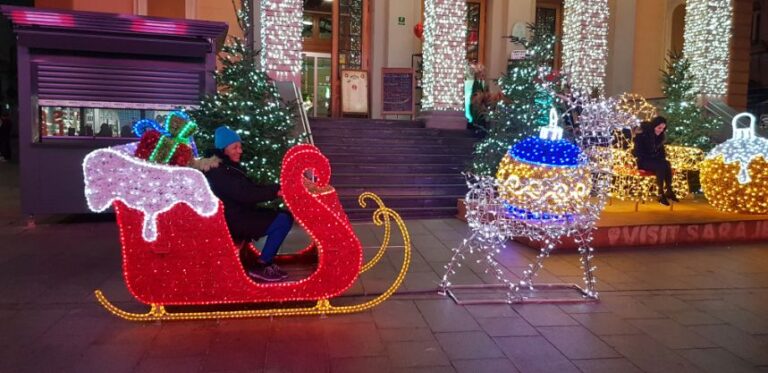
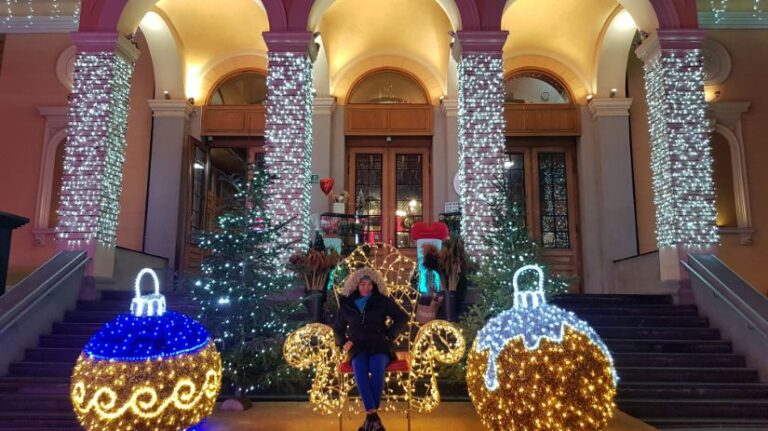
Other important Tips and Information about Bosnia and Herzegovina
- The languages spoken – Serbian, Bosnian and Croatian, and English (minor).
- Official currency –
Bosnian Convertible Mark
1 USD = 1.80 BAM/KM
1 EURO = 1.95 BAM/KM
1 GDP British Pound = 2.24 BAM/KM
-
In 1885, Sarajevo was the first city in Europe and 2nd city (San Francisco the first) in the world to have a full-time electric tram running through it.
-
The country has two autonomous entities; Republika Srpska (Bosnian Serbs Republic) in the north and east of Bosnia, covering 49% of the total area. The other entity is the Federation of Bosnia and Herzegovina, which is predominantly Bosniaks and Croats. It is in the western and central parts of the country and covers 51%.
-
The Sutjeska National Park in eastern Bosnia is one of the UNESCO-listed parks. Perucica is part of this park and is a rainforest over 20,000 years old. It comprises 170 species of trees exceeding 300 years old, abundant wildlife, and thousands of plant varieties. Additionally, the Skakavac Waterfall, one of Bosnia’s highest at 246 feet, is also nearby. They identify it as the last remaining primeval forest in Europe.
-
Bosnia and Herzegovina have three presidents. The Federation of the Bosniaks, Croats, and Serbs for the Republika Srpska voted and elected them. All three elected presidents serve for four years each, and each president has power for eight months, then it is rotated.
- There are about 80,000 unexploded landmines left over from the war still uncovered within the country on 2.2% of the nation’s land in eastern Bosnia.
- Bosnia and Herzegovina became independent from Serbia in June 2006. They also gained admittance as a member of the UN (United Nations) on May 22nd, 1992.
- The Gazi Husrev-bey Mosque in Sarajevo was the first mosque worldwide to use electricity and electric illumination in 1898. They constructed it in the 16th century. It is the oldest and largest mosque in Bosnia.


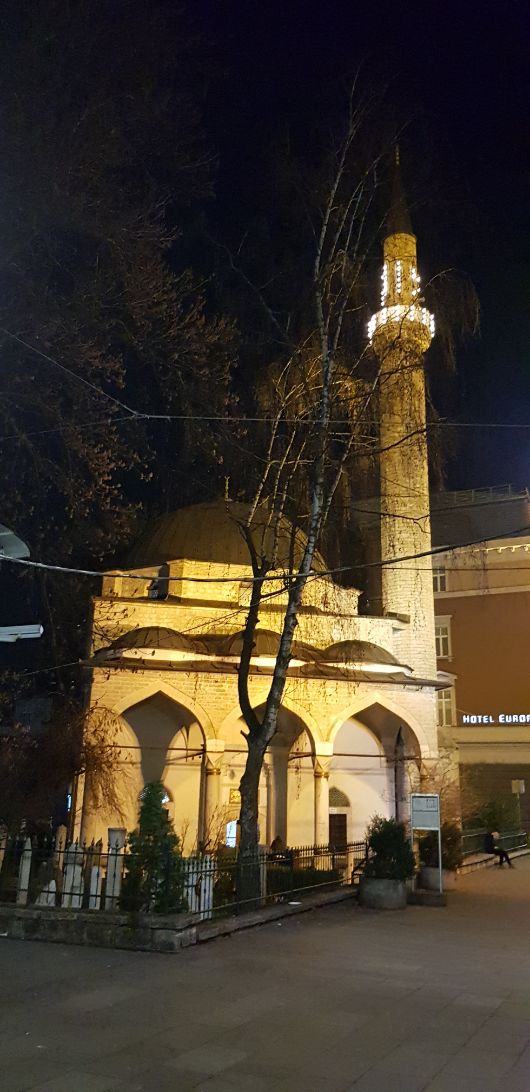
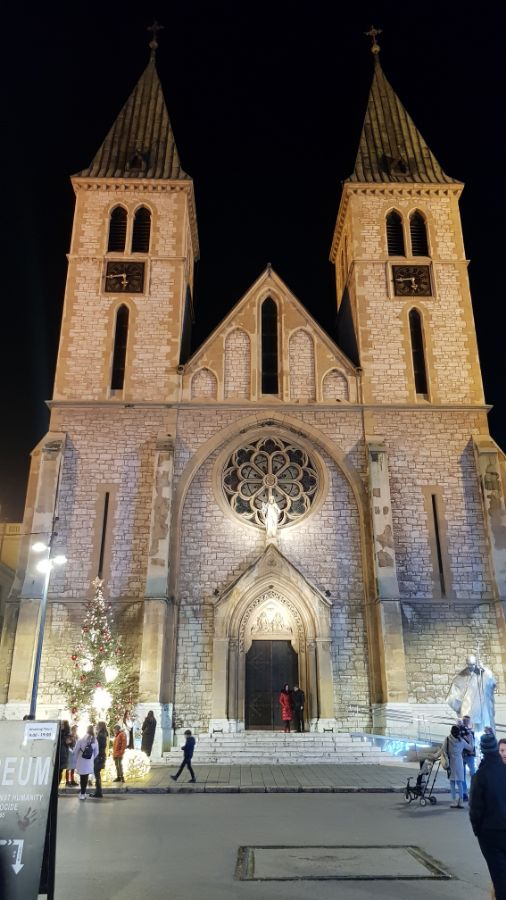

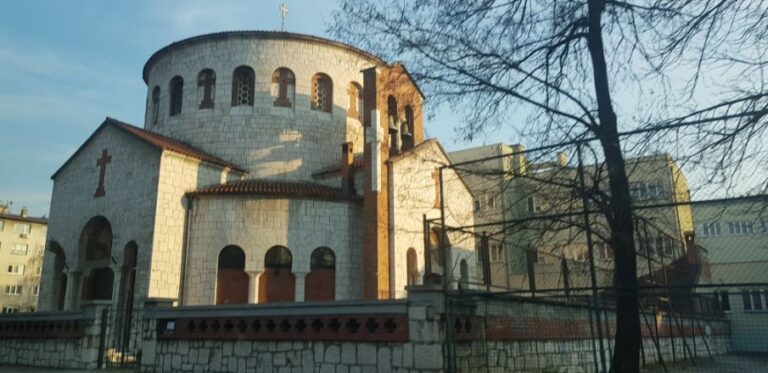
Solo Traveller in Sarajevo, Bosnia and Herzegovina Cont...
- Bosnian currency (Marka and Pfennig) is one of the most difficult currencies to exchange outside the country. So be sure to change all currency before leaving, because you will have difficulty finding a foreign exchange that will accept it.
-
The small Herzegovinian town of Medjugorje is famous for being a Catholic pilgrimage site. They say this site is holy because Mary Magdalene, mother of Jesus, appeared on the hill to six children, thus turning this village near Mostrar into a pilgrimage site. Consequently, more than 30 million people have visited the site, since 1981, with some claiming to have seen signs in the sky.
- In some parts of Bosnia, the tradition of firing off gunshots in the air at celebrations such as weddings or childbirth still exists today.
-
Following the breakup of the Yugoslavian Federation in 1992. It plunged Bosnia into a three-and-a-half-year-long war from 1992 to 1995. The war was mainly Serbian forces committing genocide against the Bosniaks – Bosnian Muslims. This war ended with the signing of the Dayton Agreement (an agreement between the three entities for Peace in Bosnia and Herzegovina).
- Bosnians are the 10th biggest coffee drinkers worldwide.
- The country is nicknamed “heart-shaped land” because of its slight heart shape.
-
Orthodox Bosnians celebrate Christmas on January 7th, instead of December 25th, and Old/New Year on January 13th/14th. Additionally, they observe Easter a week after others in the Western world.
-
In 2002, Danis Tanovic (Bosnian) won the Oscar award for best foreign film – “No Man’s Land.
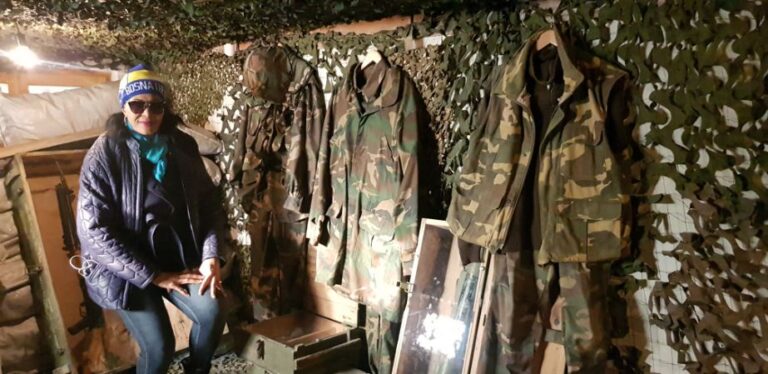
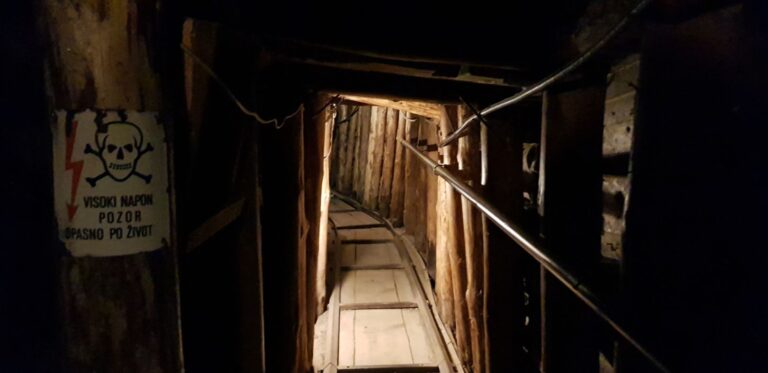
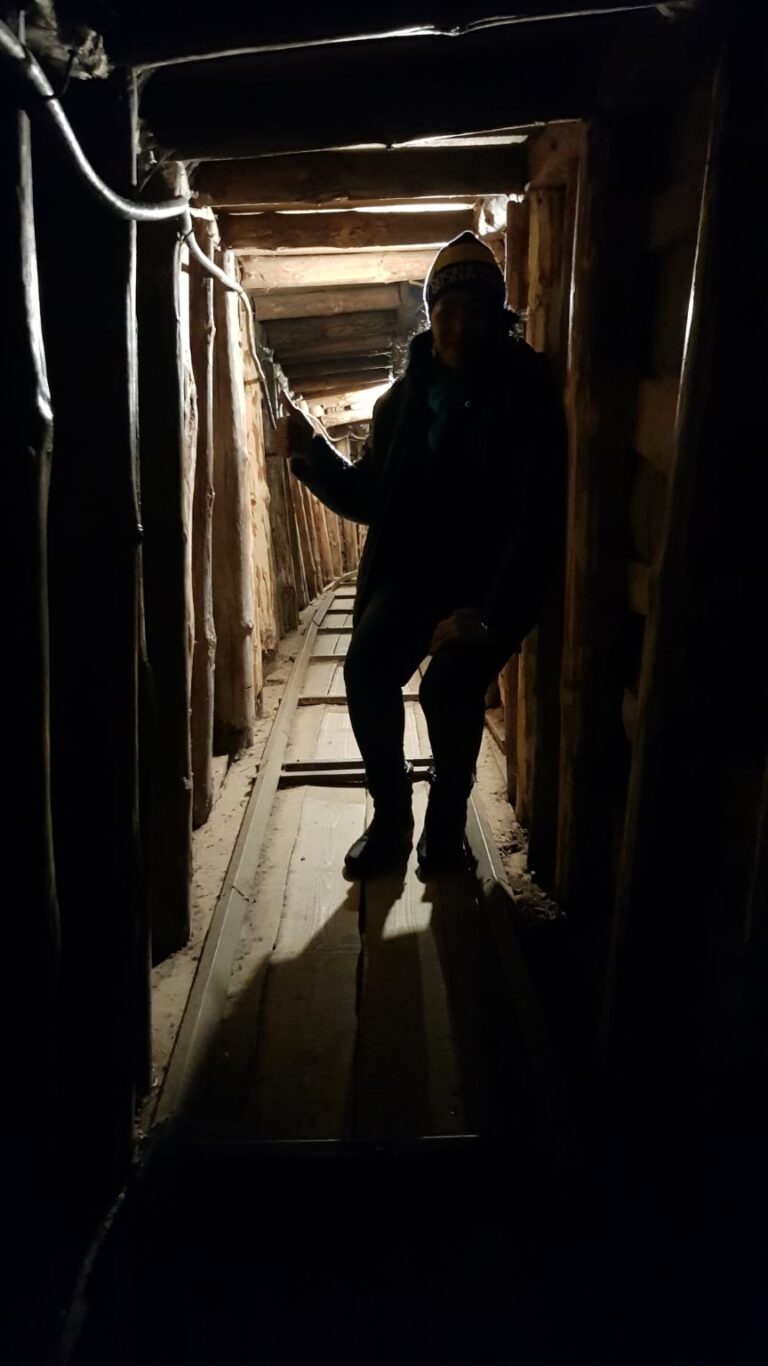
ABOUT THE PEOPLE OF BOSNIA & HERZEGOVINA AND SECURITY
Bosnia and Herzegovina is home to the three largest ethnic groups; the Bosniaks, Serbs, and Croats. Bosnians are kind, outgoing, gracious, do not mind taking photos with visitors, and are quite personable. Bosnians are some of the tallest people I have met. Some reports state that Amsterdam, has the tallest people, but I think Bosnians and Montenegrins are first and second…just wow! I fitted in quite comfortably like a local ha! As a solo traveller in Sarajevo, Bosnia and Herzegovina, the people locals I interacted with were pleasant, helpful, outgoing, and warm towards me.
Bosnian men are handsome, and the women are gorgeous. They are very down-to-earth, hospitable, and chatty people. Maybe because they are of Slavic descent has something to do with it. Notwithstanding this, all the people of former Yugoslavia are also very ambitious, outgoing, and hospitable.
I have been to all the former Yugoslavian countries, and I think they are some of the nicest people I have encountered. Despite further recovery from the war and a high unemployment rate, the people seem to have a sense of pride and contentment.
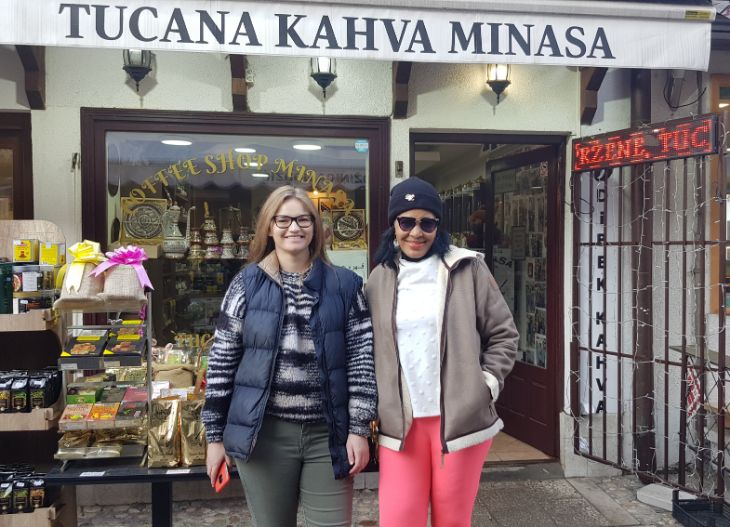
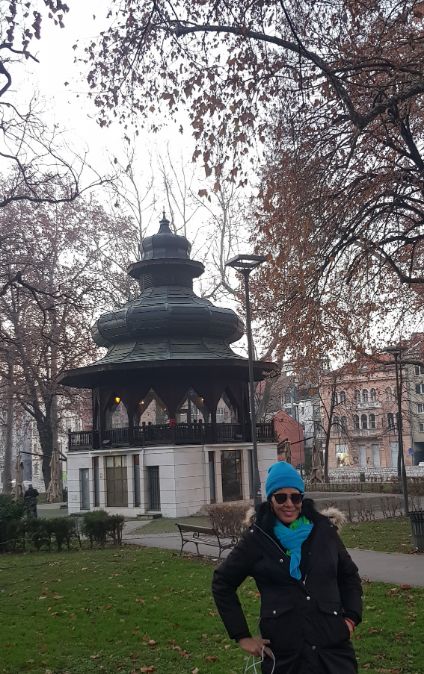
Solo Traveller in Sarajevo, Bosnia and Herzegovina. Cont...
Bosnians have a certain level of religious tolerance, with each group living peacefully and celebrating with each other. For example, the Muslims celebrate with the Orthodox Christians, Catholics, and Jewish minority, and they likewise with the Muslims. According to the locals, during special holidays like Christmas and New Year’s, etc., they celebrate with the Catholics and the Orthodox Christians (which both observe at different times), and they, in turn, celebrate Ramadan and EID with the Muslims.
Regarding security, all went well and were void of any security issues. As a solo female traveller, I always take precautions wherever I travel. Sarajevo was no different, even though I felt safe at all times. During my stay in the city, I heard nor saw anything that was of any security threat, nor any petty or major crimes. All was safe.
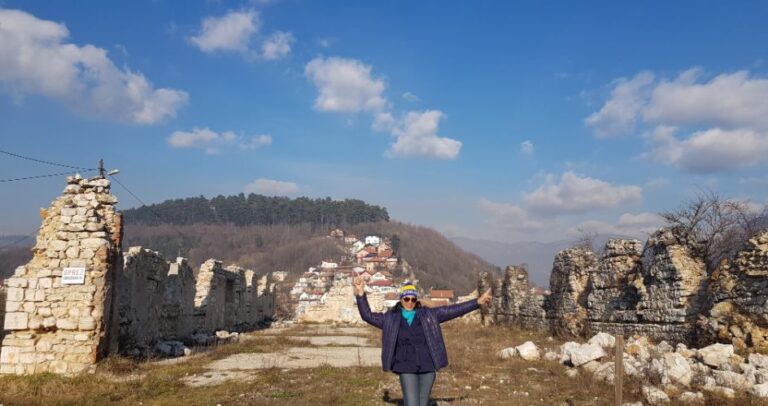
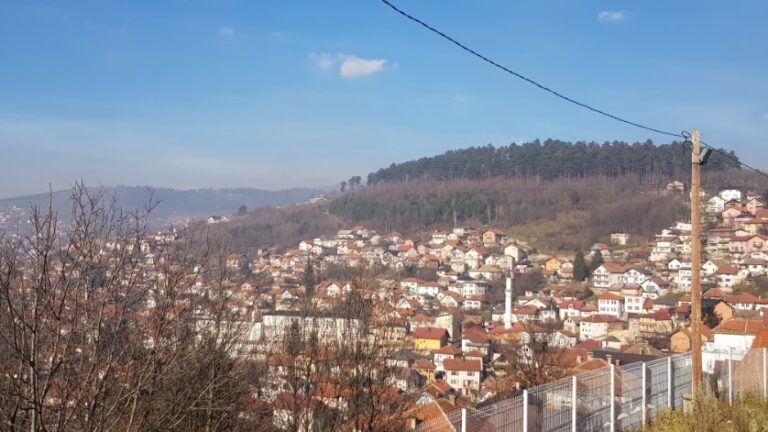
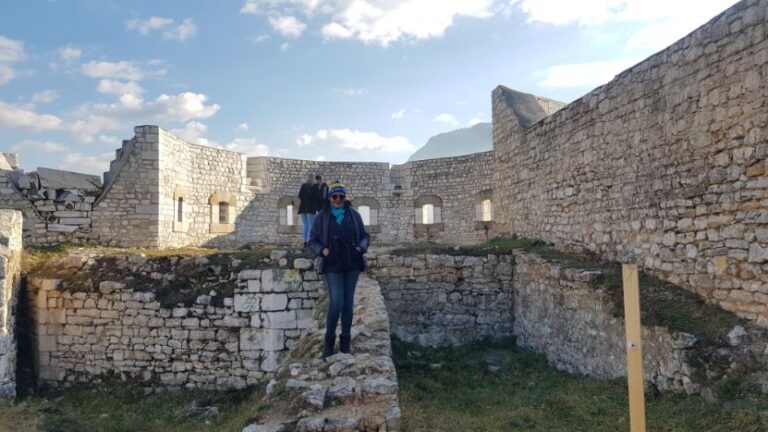
HOW EXPENSIVE ARE THE ACCOMMODATIONS, MEALS, AND TRANSPORTATION?
Bosnia and Herzegovina, or precisely Sarajevo, is inexpensive. Compared to some countries nearby like Turkey, Kosovo, and North Macedonia, it joins them as another budget-friendly destination. Bosnia is one of the cheapest countries in Europe, and even cheaper than those already considered inexpensive, such as Serbia, Bulgaria, Montenegro, Albania, and Croatia.
Sarajevo has excellent prices for accommodation as low as 25.00 USD and less than half this price if you prefer a hostel. (See booking.com for the best deals in Sarajevo, Bosnia and Herzegovina). Similarly, is food at the supermarkets, fruits at the fruit stalls, and meals at restaurants. They were all reasonably priced.
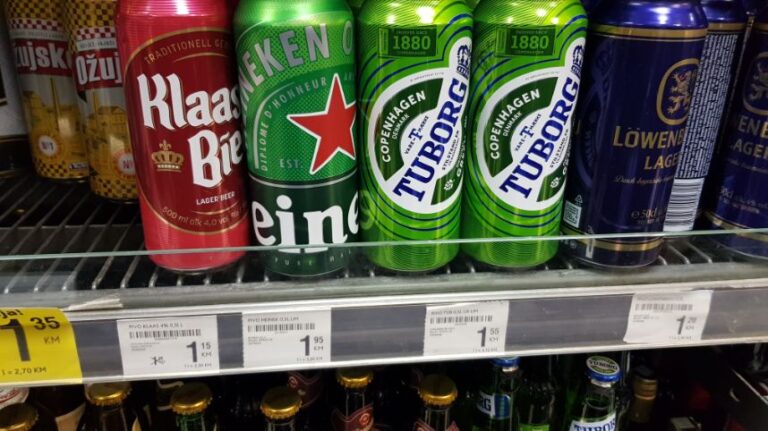
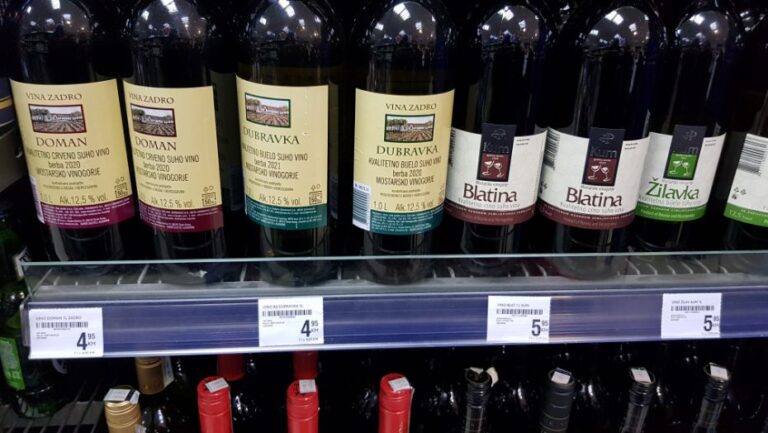
Transportation in the city is inexpensive (including taxis) and plentiful. There are Trolleybuses, trams, and regular buses and minibuses. However, to avoid the hassle and extra walking from these stops, I recommend the taxis not only because they are plentiful but cheap as well. Using a taxi to get around the city is easy, and they are available 24/7. Note there are no Uber, Bolt, or Lyft operating in Sarajevo, but you can find Moj Taxi (My Taxi) App, the most popular one in the city which you can easily download.
There are also many private taxi companies operating in the city and you can see the words “Taxi” or “Sarajevo Taxi” affixed to them. The three most popular taxis are Sarajevo Taxi, Zuti Taxi, and Creveni Taxi, among others. Therefore, you can call and pre-book your ride any time to anywhere without being overcharged because you are a visitor. Because these are well-regulated, and metered, cabs, you will receive a price upfront when you pre-book them.
ABOUT BOSNIAN FOOD
Traditional Bosnian cuisines share similarities with other Balkan countries such as the Turkish and Mediterraneans. With its influences from the Ottoman era, their dishes remain unchanged from generation to generation. Typical dishes comprise vegetables and lots of meats (preferably Halal). Bosnian dishes are delicious, hearty, and tasteful because they use moderate spices such as paprika. Below are some traditional Bosnian dishes you should try in Bosnia and Herzegovina on your next visit.

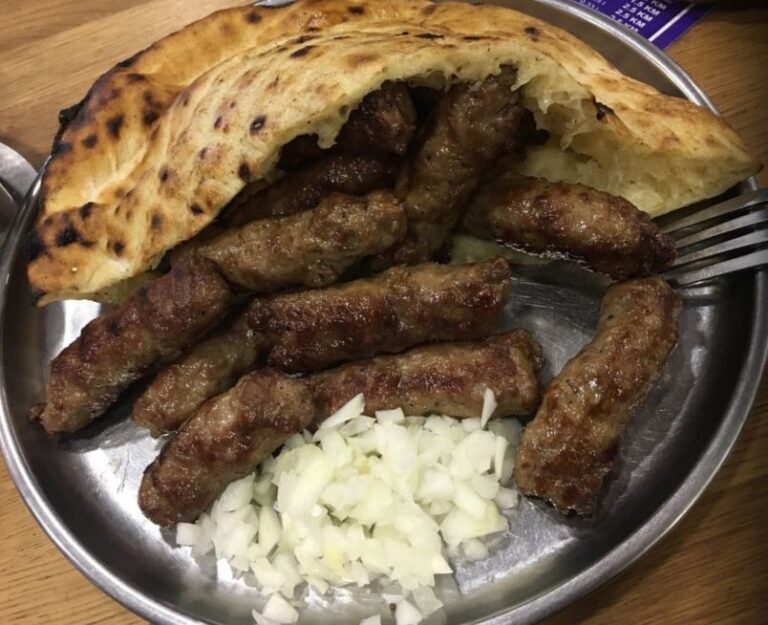
BOSNIA & HERZEGOVINA TRADITIONAL DISHES YOU MUST TRY
1. Klepe – Bosnian minced meat Dumplings (similar to ravioli, these are meat or cheese-filled dumplings made from a soft textured dough which they then steam and serve with yogurt or garlic sauce).
2. Bosanski Lonac – Bosnian Pot (this is a national dish unique to Bosnia. It is a stew heavy on the meat of lamb and beef, and also vegetables. They prepare the meal by stacking layers of meat and vegetables until it fills the pot, then cook it on a fireside for four hours).
3. Cevapi (Bosnian traditional dish. It is a sausage made from a mixture of pork, beef or lamb. It is a small oblong-shaped sausage. Then they grill it and serve it with chopped onions and sour cream in a Sumun – a Bosnian pita-type bread).
4. Musaka (a delicious ground beef and potato casserole. Unlike the Greek casserole made with eggplant, Bosnia makes it with sliced round potatoes and ground meat. They layer and top it with egg and sour cream).
5. Ustipci (these are small, crispy balls of fried dough, similar to doughnuts, with a sweet (jam or honey) or savoury (cheese or meat) filling. The locals enjoy them with tea or coffee).
6. Dolma (another Balkan and Mediterranean favourite. They make this dish by stuffing seasoned meat or rice into eggplants, zucchinis, and peppers. They then serve it with a lemon-based sauce, garlic sauce, or yogurt).
7. Burek (a popular Balkan treat, where they fill filo pastry with cheese, spinach, potato, or meat. You can buy Bosnian bureks as a single slice or a large pie.
8. Begova Corba aka Bey Soup (A slow-cooked creamy stew made with a mixture of chicken and vegetables, then served with sour cream in a clay pot).
9. Pljeskavica (this is a flatbread burger made with beef, lamb or pork. Additionally, relish, onions, and cheese accompanies it as a tasty, delicious street burger).
10. Duvec (a Bosnian vegetable stew made with various vegetables, such as carrots, tomatoes, peppers, peas, and herbs and spices, like paprika. Duvec is usually vegetarian, but meat variations like lamb, beef, chicken, pork, and sometimes they add rice).
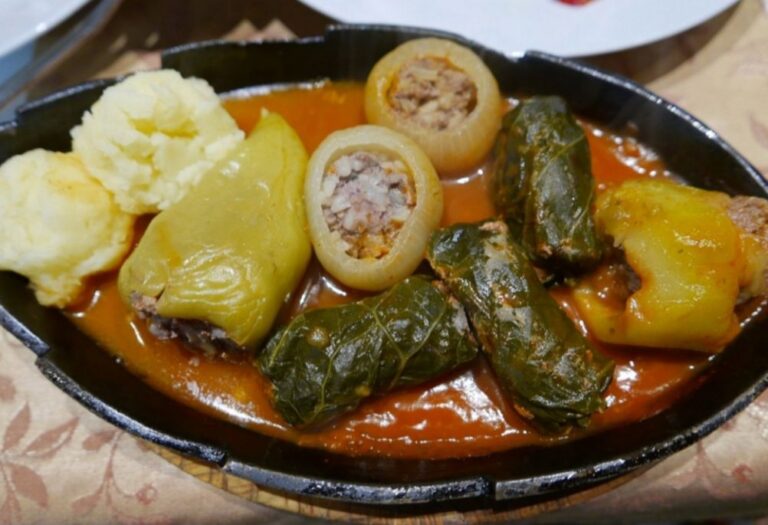
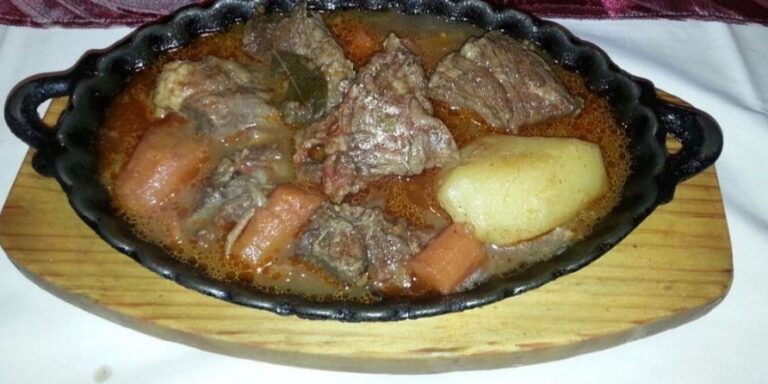
Solo Traveller in Sarajevo, Bosnia and Herzegovina. Cont...
Disclosure
CoraDexplorer Affiliate Disclosure
Some of the links on this blog/website are affiliate links, and if you purchase products or services through these links a commission may or will be paid to the owner of this website. The amount of commission varies from product to product. All commission earned helps in the funding of this blog/website.
Caribbeansolotraveller.com is a participant in the Amazon Services LLC Associates Program, an affiliate advertising program designed to provide a means for sites to earn advertising fees by advertising and linking to Amazon.com.
As an Amazon Associate, this site also earns from qualifying purchases.
Prices will be the same whether you use the affiliate link or not, you will NOT pay more by clicking through said affiliate links. You are guaranteed a 100% safe link in helping to keep this site going.


WHAT IS MY OVERALL RATING OF SARAJEVO/BOSNIA AND HERZEGOVINA?
I rate Bosnia, and by extension Sarajevo, as excellent. On a scale of 1 – 10, I give it an 8 for overall look, feel, ambience, people, prices, and experience. I truly love the city. Sarajevo looked nothing like what I thought it would. It surpassed my imagination and expectations. Of all the cities I visited on my most recently concluded trip, Sarajevo surprised me the most. It is truly one of Europe’s hidden gems.
It is unfortunate and disheartening that some countries suffer stigmatization for life because of their past and not their present-day reality. The mention of their names can conjure up fear and thoughts of drugs, wars, etc. It is because they sometimes have done little to rebrand their image or favourably promote the country.
A perfect example is Vietnam, (one of the two most heart-warming countries) I have visited. It is a post-war country that impressed me with its development, uniqueness, and beauty. Similarly, Sarajevo and Bosnia have a stain because of their turbulent past, which could deter more visitors to the country. However, unlike many who do not research and become paranoid because of what they see on television, they are missing out.
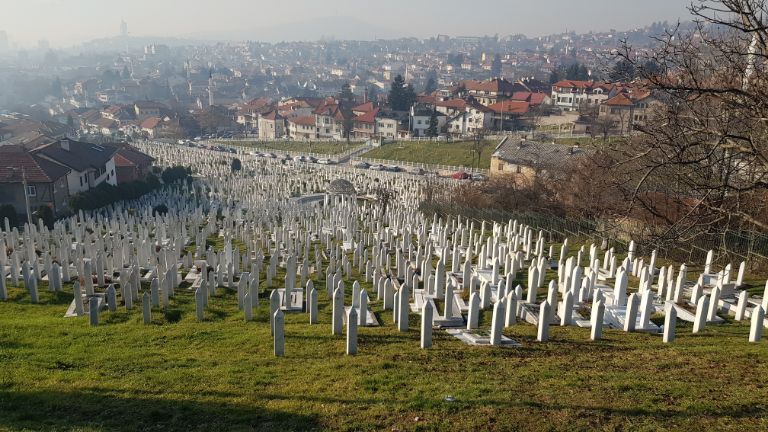
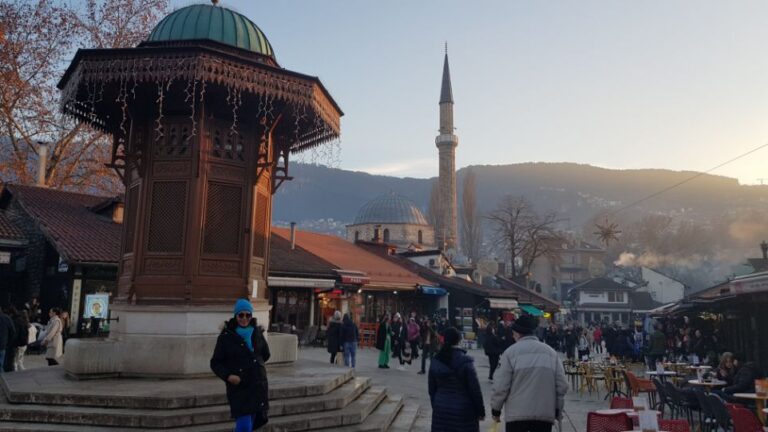
Sarajevo is supposed to be an off-the-beaten-path destination, but from what I saw in the city and at some tourist sites, it seems quite the opposite. Because it had more visitors than many other popular destinations I visited, even though it was wintertime and the low travel season. I can only imagine how filled the city is during the summer.
I recalled asking the taxi driver where Bosnia gets its money from to have the city look so developed. Anyone could have seen they splurged on Christmas decorations (they decorated the city beautifully) when other prominent cities had fewer decorations or none. I cannot repeat his reply as to where, “in his view”, they access the revenue, haha. It has the wow factor and is a city I would love to revisit.
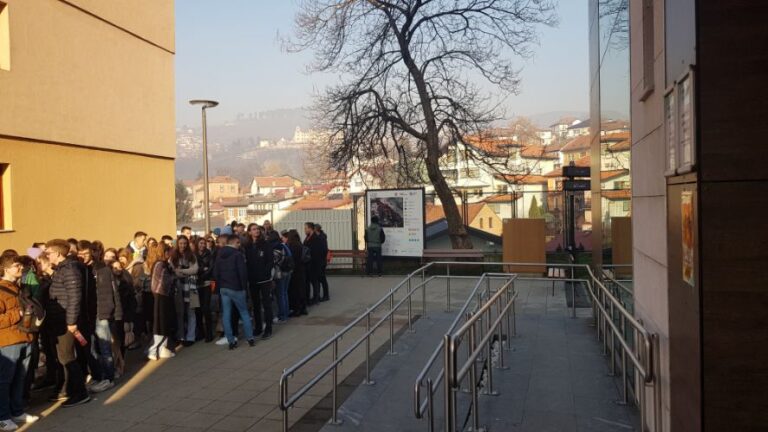
MUST DO/VISIT SITES OF INTEREST IN SARAJEVO/BOSNIA & HERZEGOVINA
1. Mostar and Stari Most – one of Bosnia’s most beautiful cities, a top attraction in the Balkans, and a UNESCO World Heritage Site. If you like culture and landscapes, take a day trip or two days and visit this city, if time permits. While there, visit the world-famous, Stari Most (Old Bridge), constructed in 1566. The bridge has one of the most unique designs worldwide. This Ottoman architectural masterpiece has the widest arch in the world. The train takes an average of two hours, and the bus takes under three hours.
2. Visit the War Museum, the Sarajevo War Tunnel & Tunnel of Hope – At the museum in the city, it is free to enter. Visitors can see relics from during the war period, and you can also view the videos of the day the city was besieged.
The War tunnel is about 30 minutes drive from the city center (Srpska), and it is not free. It is a must-visit site when visiting Sarajevo. They built the “tunnel of hope” during the besiegement, to transport food, weapons, and medicine into the city. It was one of the main lifelines for Sarajevo. I highly recommend visiting the war tunnel.
3. Cable car ride to Mount Trebevic – also known as the “lungs of Sarajevo”. It is a green, lush mountain high above Stari Grad (Old Town). Anyone can access it by a 20-minute taxi ride, but you will miss the view of the city overhead from the car, and this is part of the major attraction. Therefore, take the cable car ride up the mountain and enjoy the view. The gondolas serviced this site before the war and took passengers to the lush mountain.
However, because of the war from 1992 to 1995, they curtailed the service. It was from the Trebevic mountain that mortars and bullets rained down on the city of Sarajevo, killing thousands. After the war, it took years to rid Mount Trebevic of landmines. This site truly has the wow factor and seemed very popular because I had to line up for more than an hour before I entered the building to access the cable car.
This is another site I highly recommend. At Mount Trebevic, you will see the global Olympic rings in all their glory, not to mention the scenery is outstanding and a perfect picnic getaway from the city.
4. Bijela Tabija (White Fortress) – this is a National Monument of Bosnia and Herzegovina and one of the five fortifications built to defend the city. It has an impressive view of Sarajevo’s city center, even better than Yellow Fortress. It is also one of the top tourist attractions in Sarajevo.
It takes its name from the white rocks used to build it (even though most of the walls have disintegrated over time) during the 14th – 15th century. I visited during the winter, so the fog somewhat obscured the view of the city, which covered the city most days. During the summer, I am sure the view of the city is much more satisfying. Take a taxi from the city to this site. FYI, there is a fee to enter.
5. Vijecnica Sarajevo City Hall – a Czech national designed this building in 1891. Unfortunately, it was destroyed during the war, but they completely rebuilt this quirky yet beautiful. “must-see” structure.
6. Visit the Latin bridge – this bridge crosses the Miljacka River in Sarajevo. On June 28, 1914, it was at this exact spot where they assassinated Archduke Franz (next in line for the Hungarian throne) and his wife during a motorcade. That then triggered a chain of events that started World War 1.
7. The Emperor Mosque – it is touted as the most beautiful Ottoman mosque in the Balkans. They built it in 1457, and it was the first mosque built after the Ottoman conquest of Bosnia. It was a dedication to Sultan Mehmed, the conqueror of Constantinople.
8. Martyrs Memorial (Shahid) Cemetery Kovaci – the cemetery dates back to the 15th century and it is the final resting place for many dignitaries and Bosnians who died defending themselves from Serbs’ aggression during the civil war. It is also the resting place for soldiers of the Bosnian Army, and some civilians killed in the Yugoslavian war. This cemetery is open 24 hours a day and is in one of the oldest settlements in Sarajevo.
9. Sebilj Fountain – built in 1753. it is the last surviving one in the city. Legends say if you drink from the fountain, you will always return to Sarajevo. It is one of the most famous landmarks in the city and is at the lively Bascarsija Square.
10. The National Museum of Bosnia and Herzegovina – this is the oldest and most comprehensive institution in Bosnia. It has a vast collection of artifacts from prehistorical and post-war to the present. It features exhibits on the history of the country.
11. The Yellow Fortress – If not to see remnants of history, go for the view. Day or night, the view is simply breathtaking. It is an excellent lookout point to view and enjoy the beauty of Sarajevo. Unlike the White Fortress, it is free to enter.
12. Gazi Husrev-beg Mosque is the largest mosque in the country, built in the 1500s. They damaged it during the civil war, but they reconstructed it after 1996. The mosque is in the center of Old Town and is gorgeous inside and out. The Ottoman War hero Husrev-beg gifted it to the city of Sarajevo upon his death.
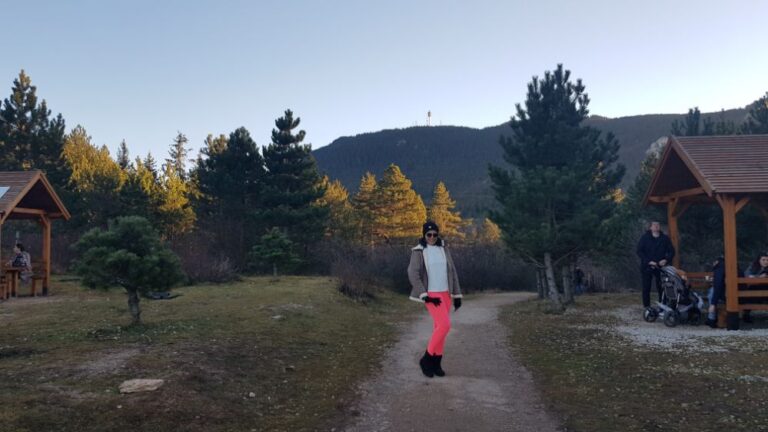
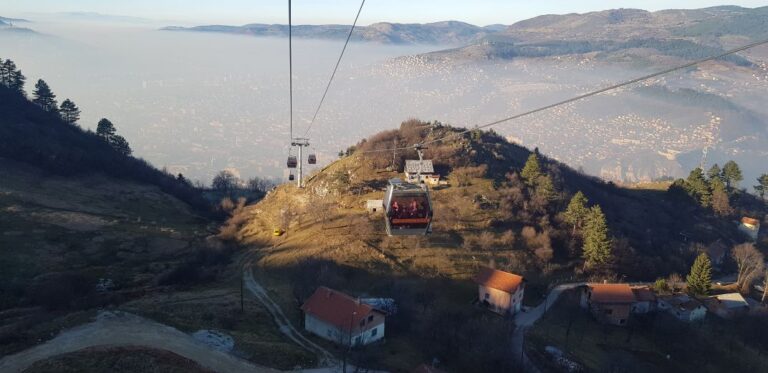
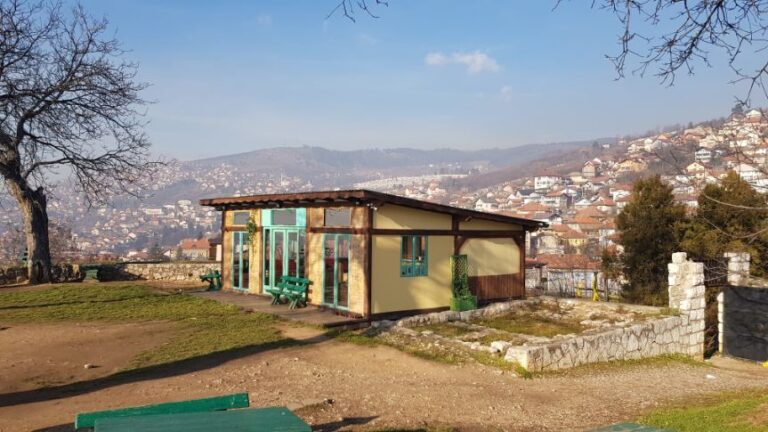
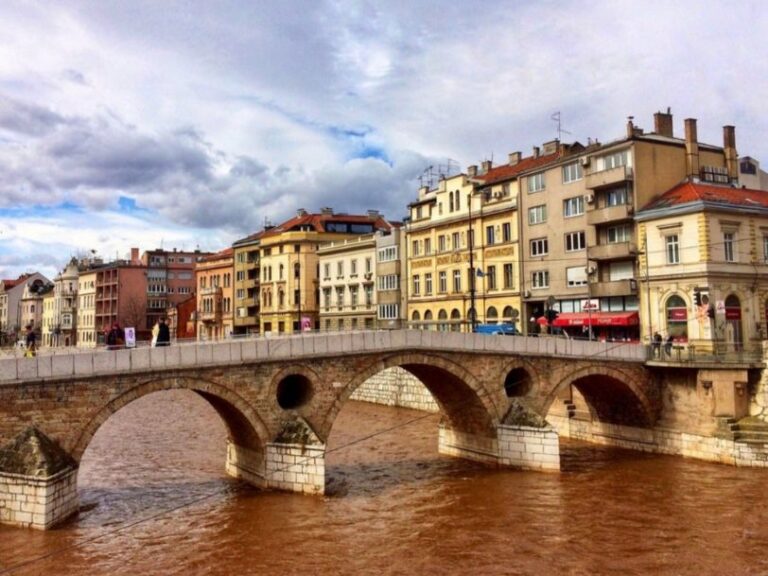
SUMMARY
Bosnia Herzegovina is a unique and somewhat popular tourist destination. I say this cautiously, based on the number of visitors I saw throughout the city at the souvenir shops and sites. I also met some ladies visiting from Greece. Sarajevo looked nothing like what I thought it would.
It is a gem, tried by fire, and came out even more beautiful with resilient people. I highly recommend it to adventure seekers, budget travellers, and solo travellers like myself. Because I was a solo traveller in Sarajevo, Bosnia and Herzegovina, and had fun. The entire trip went the way I planned it, with no problems. So fear nothing and add Bosnia to your travel itinerary and enjoy.
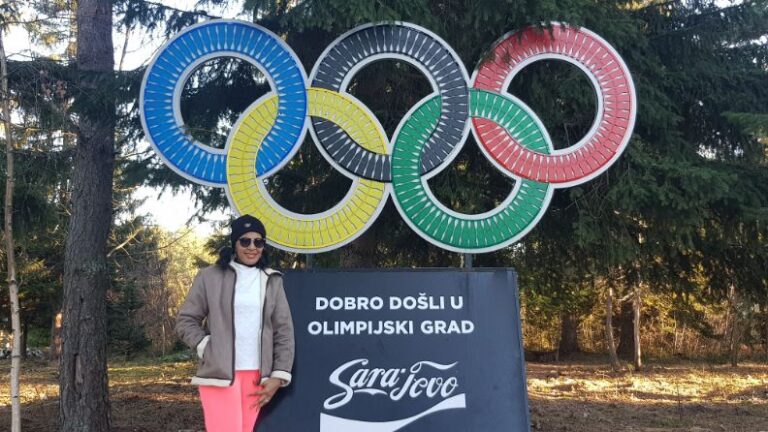
Please Subscribe for future articles, if this post was helpful in any way. Also like my Facebook page to view my travel videos from around the world. For more interesting posts, check the other informative and enjoyable travel articles from my Travel Blogs.
I appreciate and thank you in advance.
Use the share buttons below on scroll, if you wish to share anything on this page. The + button offers more share icon options when clicked.






